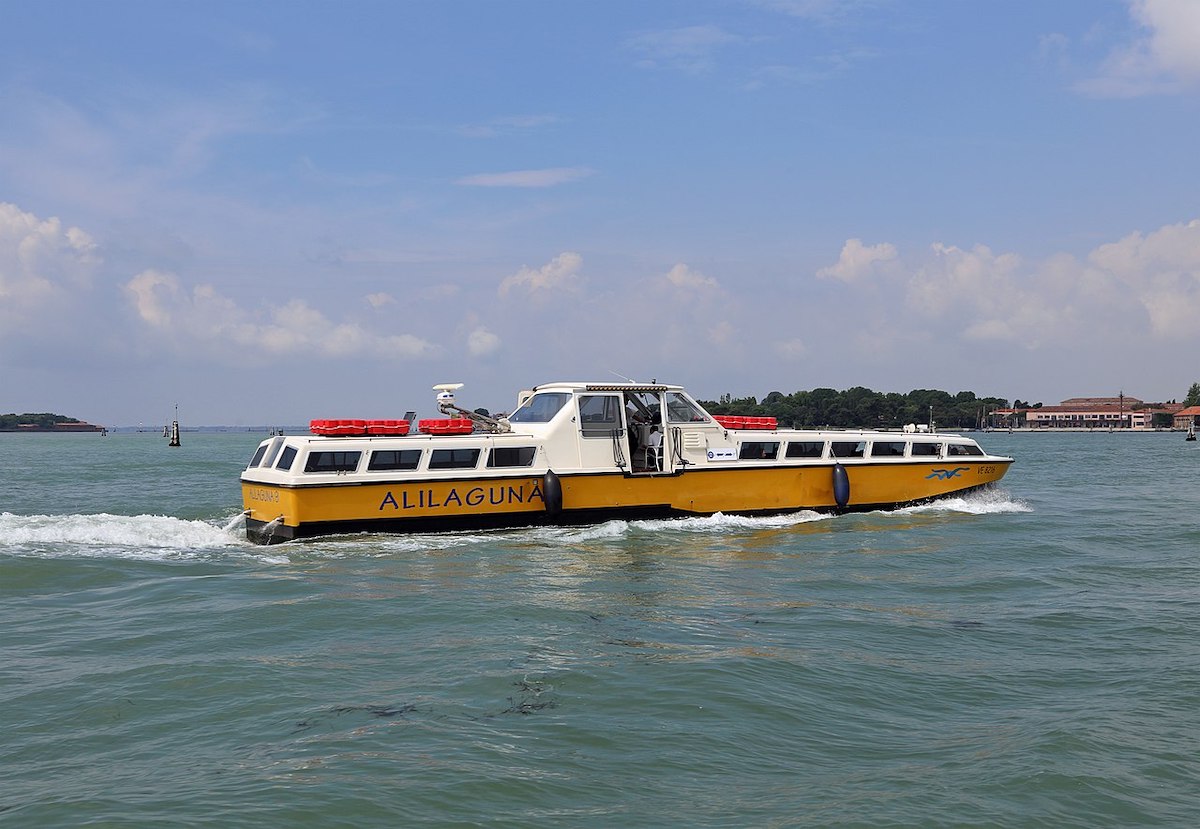Venice is a city that sets itself apart from the rest of Italy. Unlike typical urban landscapes, it’s defined by its intricate system of canals, lending a distinctive character to its public transport infrastructure that mirrors the city’s uniqueness.
When it comes to navigating and moving around Venice’s islands, you have several options including water buses, gondola ferries, water taxis, famous gondolas.
Read along as we break each option down and help you figure out the best way to move around Venice during your trip.
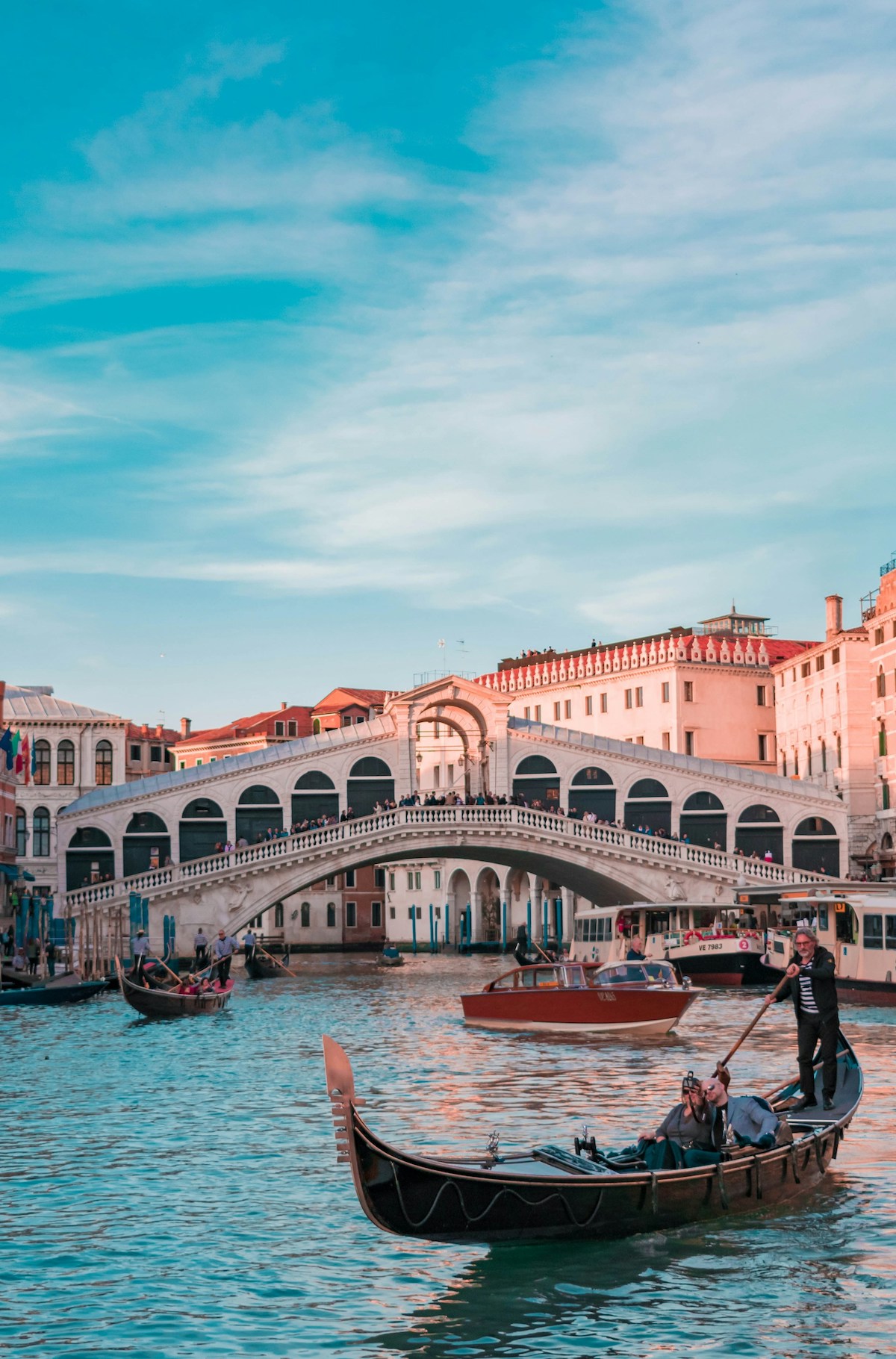
Vaporetto (Water bus)
The vaporetto is the main public transportation in Venice and it’s the most used by locals and tourists. These water buses connect Venice through its different lines with the other islands, especially the most visited ones, Murano and Burano.
Here are some of the most relevant lines for first-time visitors and tourists:
- Line 1: Piazzale Roma – Ferrovia – San Marco – Lido
- Line 2: San Zaccaria / San Marco – Giudecca – Zattere – Tronchetto – Piazzale Roma
- Line 4.1: Murano – F.te Nove – Ferrovia – Piazzale Roma – Giudecca – San Zaccaria – F.te Nove – Murano
- Line 4.2: Murano – F.te Nove – San Zaccaria – Giudecca – Piazzale Roma – Ferrovia – F.te Nove – Murano
- Line 5.1: Lido – Ospedale – F.te Nove – Ferrovia – Piazzale Roma – San Marco – Lido
- Line 5.2: Lido – San Marco – Piazzale Roma – Ferrovia – F.te Nove – Ospedale – Lido
- Line 7: San Marco – Murano – San Marco
- Line 12: F.te Nove – Murano – Mazzorbo – Torcello – Burano – Treporti – Punta Sabbioni
Vaporetti operate throughout the day from 4:30 a.m. to 12:30 a.m., although their frequency drops during the night. Keep this in mind if you want to explore Venice at night.
To get tickets, you can go to the different vaporetti stops, and the main points in the city, or buy them online. You’ll have the option of purchasing a single ticket, or you can buy a card that covers you for 24 hours. For more info, visit the Actv website, currently Venice’s main public transport provider.
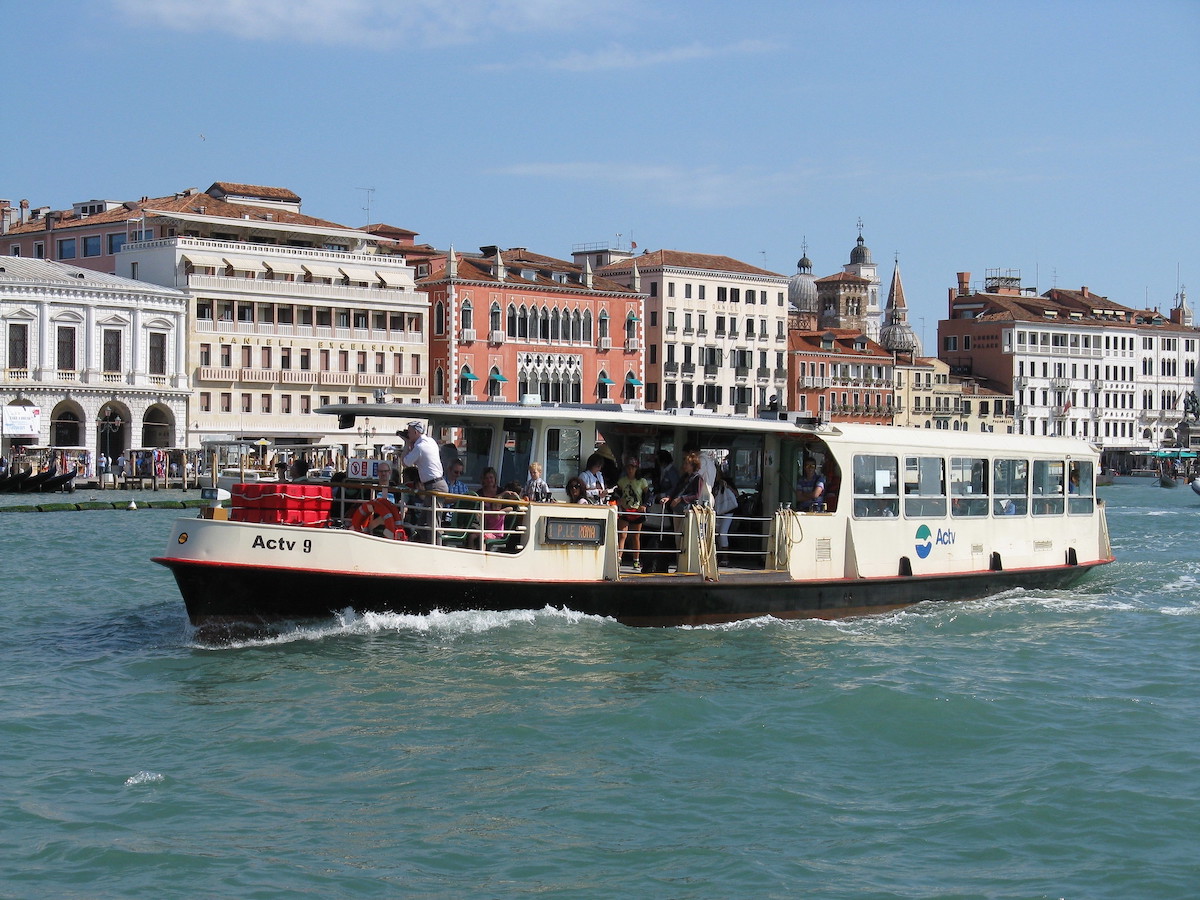
Water taxis
For people interested in having more privacy and control of their time, the best way to get around Venice is by taking a water taxi. It is the ideal transportation to reach destinations not served by the vaporetto, or just an alternative way to travel comfortably.
To order water taxis, you can go to the various taxi stands throughout the city, or book them at the Consorzio Motoscafi. Their maximum capacity is 10 people, and the price will vary depending on the route.
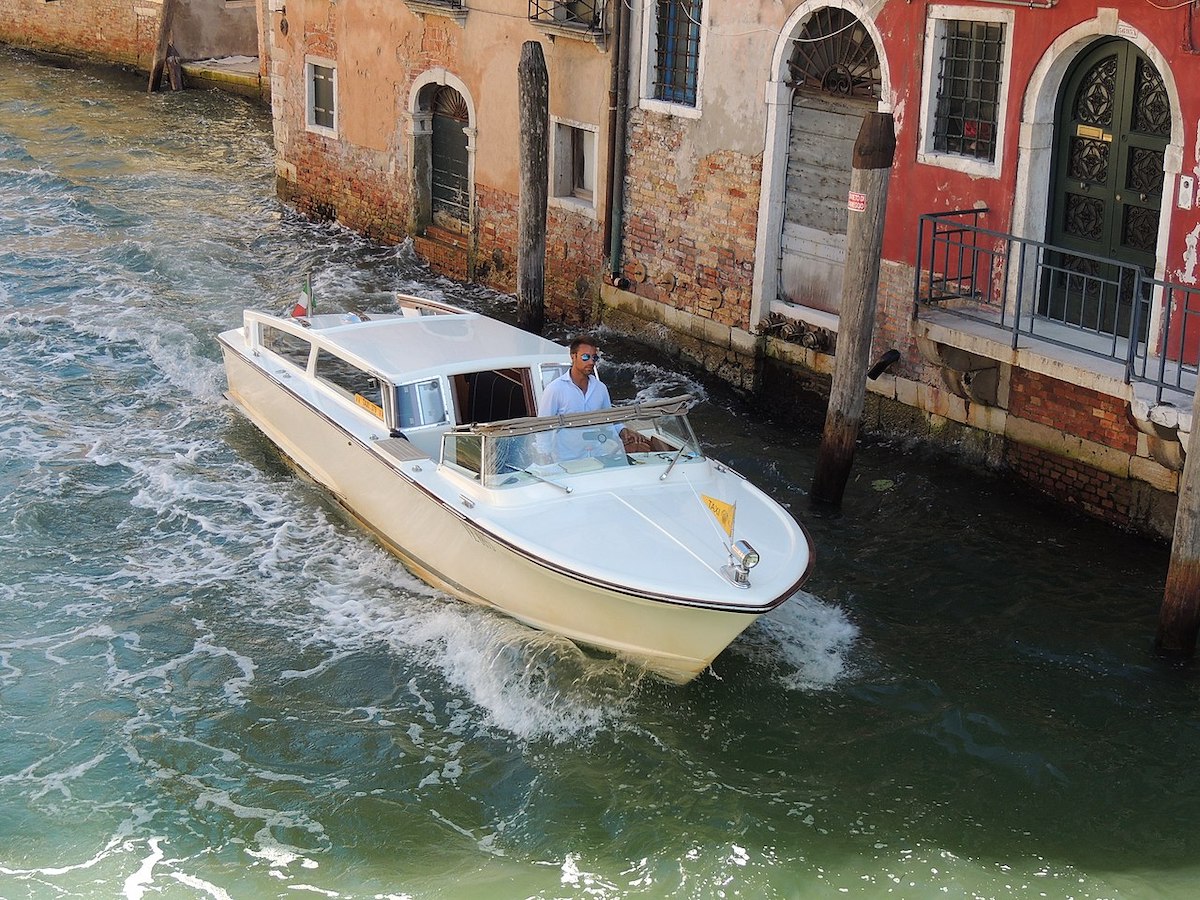
Traghetto
The traghetto is a style of gondola used mostly by locals to cross the Grand Canal from one point to another in the city, specifically where there are no bridges.
It is usually the fastest and most economical method, without using the famous tourist gondolas. In fact, it’s one of the best options if you want to take a quick gondola ride without breaking the bank.
The traghetti stations are located along the Grand Canal, at the points where there are no bridges to cross.
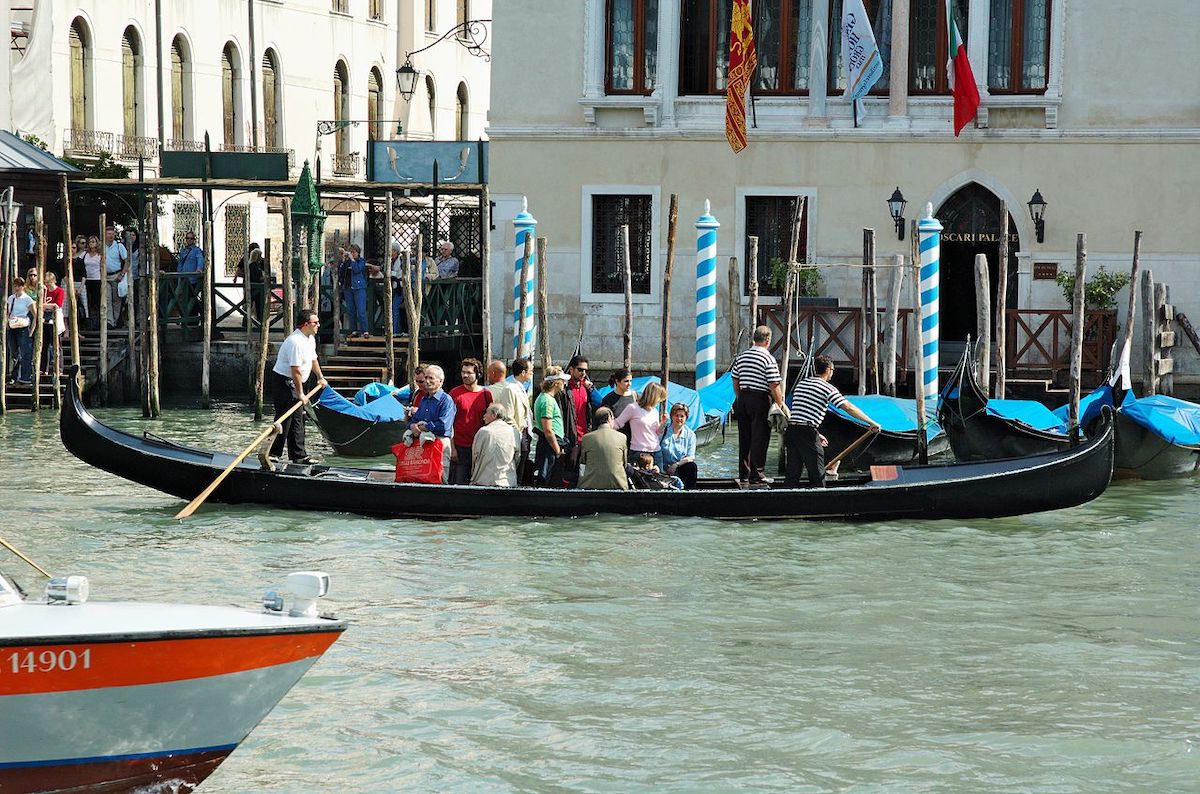
Gondola
The gondolas are probably one of the most distinctive symbols of Venice. Few people think of traveling to Venice without including a gondola ride in their itinerary.
For this reason, it is the most touristy and the most expensive transportation in the city. A gondola ride includes enjoying the best views of Venice from the water, strolling along its main monuments, buildings, and small picturesque canals.
You can usually book a gondola ride for 30 minutes or an hour, and they’ll take you around. Bear in mind that, due to how touristic it is, you should definitely be clear about the price before the ride.
Finding the gondolas is not very difficult, as they are all over the city. However, if you want to book a ride in advance and combine it with other attractions, we suggest the tour of Venice in a Day with St. Mark’s Basilica, Doge’s Palace, & Gondola Ride.
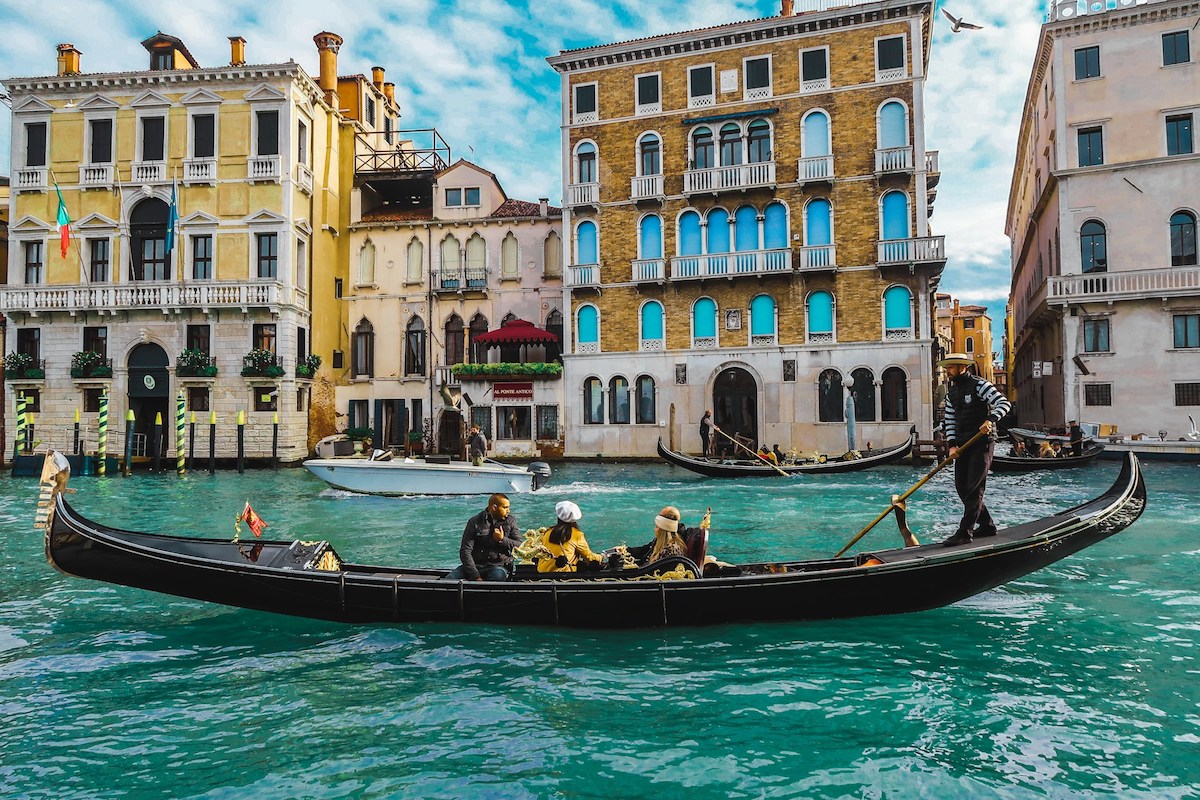
Alilaguna
The Alilaguna is another public transport service that connects Venice and other islands, such as Murano, Burano, and the Lido, with the Marco Polo Airport (VCE) through three lines.
- Line Blu (Blue): Airport – Murano Colonna – F.te Nova – Ospedale – Bacini – Lido – Arsenale – San Zaccaria – San Marco Giardinetti – Zattere – Giudecca Stucky.
- Line Arancio (Orange): Airport – Madonna dell’Orto – Guglie – San Stae – Rialto – Sant’Angelo – Ca’ Rezzonico – S. M. del Giglio.
- Line Rossa (Red): Airport – Murano Museo – Certosa – Lido – San Zaccaria – San Marco – Giudecca Zitelle – Giudecca Stucky – Cruise Terminal.
The Alilaguna operates from the early morning just after midnight on an hourly basis. You can check their official website for the specific times and prices, depending on the route.
If you want to buy them in advance, you can do so at the airport, at the different ticket offices across Venice and the islands, and online.
